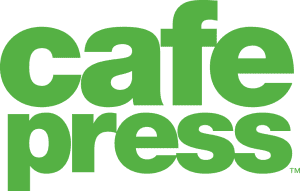What Size Should Online Images Be Uploaded to Avoid Theft?
 When visual artists are looking to protect their images, one of the first pieces of advice that they get is that they shouldn’t upload high-resolution images to the Web. After all, most photographs look just fine online at a lower-resolution and higher-resolution images can be used in print applications (including being sold on products or used in publications) and also more easily repurposed for other sites.
When visual artists are looking to protect their images, one of the first pieces of advice that they get is that they shouldn’t upload high-resolution images to the Web. After all, most photographs look just fine online at a lower-resolution and higher-resolution images can be used in print applications (including being sold on products or used in publications) and also more easily repurposed for other sites.
But what resolution should you upload your images? There’s no cut and dry answer to that question.
Some of the answer depends on where you’re going to put the image as many sites and services have size requirements that you must meet in order for your image to look good. However, some of the question also depends on where you are most worried about your images being used. After all, if your biggest fear is unattributed sharing on blogs, your needs are different than if you’re worried about commercial reprinting.
Still, by looking at some of the more common ways images are used and misused online, we can get an idea of what dimensions might be close to right for a file being uploaded to the Web.
(Note: All dimensions are in pixels unless otherwise noted. Also note the date of this article and that dimensions change regularly, check for the latest numbers before following these blindly.)
Common Social Media Uses
 Online Social Media has a very simple guide on the ideal image sizes for a variety of social networks including Facebook, Twitter, Pinterest and more.
Online Social Media has a very simple guide on the ideal image sizes for a variety of social networks including Facebook, Twitter, Pinterest and more.
However, the numbers make one thing very clear, few social media applications require an image that is larger than 612 x 612, which is the size of the lightbox view in Instagram (though the actual photos can have a much higher resolution).
The maximum width of a Pinterest pin is 600, a timeline image preview in Facebook caps out at 403 x 403 and, similarly, a Google+ preview is only 500 x 373. However, in nearly all of these cases, it’s possible for a user to view the photo in a larger size, one that’s dependent upon their screen.
There are also several notable exceptions to that rule. Facebook cover photos, Twitter headers and Google+ cover photos are all significantly larger than 600. In fact, a Google+ cover photos is a whopping 2120 x 1192. However those are are all one-off cases where just one image needs to be that size.
For most social media purposes, a 600 pixel image may not look large when it is viewed directly, but it won’t break your Facebook or your Twitter feed (Though Twitter does 880 x 440 for an image display size) as your previews should display correctly.
Common Photo Sharing/Blogging Uses
Most photo sharing sites, such as Flickr, allow users to upload almost any photo size imaginable, so long as it is under a file size limit.
For Flickr, for example, an “original” image can be as large as 2400 x 1800 when pulled from the API. However, the much more common “large” size is 1024 x 768, which is also the recommended size on Photobucket.
At Smugmug, 1024 x 768 is considered “XL” with three more levels to go. The highest level with a set size (original can be any size) is X3Large, which is 1600 x 1200.
Looking at blogging, ideal image size is usually determined by the theme. For example, though WordPress has four default image sizes, Small, Medium, Large and Original, their sizes can be easily changed and, with the increased use of fluid layouts, the dimensions of the site change not just from theme to theme, but screen to screen.
Still, most blogs on most screens have a width somewhere between 600 and 1000 pixels. Wider than 1000 and the image likely overflows but narrower than 600, the image almost certainly doesn’t fill the area.
Tumblr, however has much more clear guidelines. Tumblr can only take images up to 1280 x 1920 and those images will display in the dashboard at a maximum of 500 x 750.
With all of this, a standard quickly emerges where anything larger than 1024 pixels wide is, most likely, superfluous. Though 1280 pixels wide might be useful for Tumblr, even a 1024 image should display well, especially in the dashboard.
<
h4>Commercial Printing</4H.
So what sizes of photographs do you need to print an image on various objects? The answer is that it depends on the object.
Most printing places, including the popular CafePress, recommend that a photo have between 150-300 DPI (dots per inch) for most projects. What this means is that a 1 inch by 1 inch item, such as a charm on CafePress, needs to be 200 x 200 in pixels.
A custom white t-shirt from CafePress, with a 10″ by 10″ front, only requires 200 DPI, but still needs to be 2000 x 2000 in order to print cleanly. This is much larger than even a high-resolution monitor. Even just printing on the pocket of the shirt, 6″ x 6″, requires an image that’s 1200 x 1200 in pixels. A custom large poster on CafePress needs to be 4600 x 7000 in pixels.
These figures are true across other sites as well. For example, the smallest image that can be used for a cover of a book on Lulu is 1313 x 2138 in pixels. That’s for a book that’s just 4.25″ x 6.87″ on the cover.
Likewise, the smallest image that will work on DeviantArt for a print is 1200 x 1500 and that’s for a low-quality 8 x 10. Even in that case, 2400 x 3000 is considered “excellent” and is preferred.
What’s quickly obvious is that there is a tremendous gap between what is a practical image size for the Web and what is a practical image size for printing on physical goods (something any graphic designer already knows). An image that’s large on the Web likely won’t be good for anything much larger than a business card when printed, even if it looks like it fills up your monitor.
Drawing Conclusions
Cutting to the chase, how large should your images be when you upload them to the Web?
On that front, it’s a good news/bad news situation. Any photo you upload to the Web that’s a reasonable size for your social media and your blogs will, most likely, be just as useful to anyone else who grabs them for a different use on the Web. It’s very difficult to find a size that fits your social media profiles but won’t work for a plagiarist or a photo thief interested in doing the same.
The good news is that you can size your images in such a way that printed use of your photos is either severely limited or nearly impossible.
Though can upload your images as low as 600 x 600 and expect your social media profiles to function reasonably well, that’s a very small size and not comfortable for viewing on most monitors. Further, it doesn’t offer significant benefit over slightly larger sizes.
For most images, targeting the 1024 x 768 size (and the range around it) makes sense. Not only is it a comfortable viewing size for most monitors, but it also is more than large enough for virtually any social media application and use in any blog or site theme you’re likely to have.
Going much larger than that begins to take unnecessary risks. Assume that, on average, every 200 pixels of added resolution to an image increases the printable size by another inch. Once works hit about 1500 pixels, they become viable for a lot of common print jobs.
While you might not be able to stop your images from being printed on charms or small buttons, you can definitely prevent them from being printed on posters, shirts and other goods.
Furthermore, this image size also makes it difficult to crop out watermarks and still have a full-sized image. If a watermark can be cropped a way and an image look good and be over 600 pixels on all sides, it may still be very useful for a would be photo thief.
So while it’s tempting to upload your beautiful images in the largest size you can, there’s little gained by doing so and you may be unwittingly inviting plagiarists and thieves to do profit and misuse your work in ways you didn’t imagine.
Bottom Line
While high resolution images are great to have, they’re best kept to offline or at least private. Social media and blogging sites have little use for images larger than that 1028 wide and adding many more pixels makes it far too useful for more nefarious thieves.
Given what’s at stake, having images that size is a reasonable compromise between allowing beautiful, effective viewing and preventing the worst of infringements.
It doesn’t mean that an artist never has to worry about infringements for as long as they live, but at least one type of infringement can be done away with.
Want to Reuse or Republish this Content?
If you want to feature this article in your site, classroom or elsewhere, just let us know! We usually grant permission within 24 hours.
